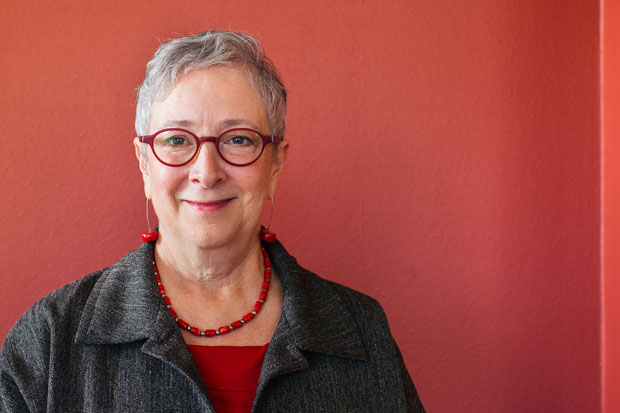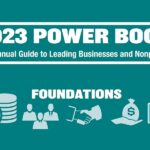BY KIM MOORE
A conversation with Martha Richards, executive director of the James F. & Marion L. Miller Foundation.
BY KIM MOORE
A conversation with Martha Richards, executive director of the James F. & Marion L. Miller Foundation

New trends in foundation giving
If anything, foundations are being more reflective about their grant making processes. They are spending time evaluating their nonprofit partners to determine impact.
Reason for increased reflection
A lot of foundations, not necessarily just the ones in Oregon, are actually evaluating and studying their work and releasing their studies to the field. When you have the opportunity to reflect on your practice, you have the opportunity to figure out how to make it better and how to make sure you are reaching people with your grant dollars that want help. There are data available now that wasn’t available 10 or 15 years ago on nonprofits and foundations that help foundations target and pick strategies that help them reach nonprofit partners.
New types of nonprofits in Oregon you are considering investing in?
Oregon arts $90Min charitable |
We are a relatively small foundation. We fund in art and K-12 education. We funded for the first time REAP this year. It is a wonderful program that elevates student voice, particularly students of color in high school. They have worked for a number of years. Now there is a desire to scale this up to make it more available to more students in Portland public schools. It is an effective strategy because it helps students own their education, their responsibilities and speak up for themselves. It has value in a variety of other school settings.
How to identify effective nonprofit strategies
There are only three of us on staff. I have five people on our board. We spend time talking in the community. We tell people what we think and hear what people think. Oregon is fairly small. You are only really two degrees of separation instead of six or seven. I find if you let people know what you are looking for, people will find you if you can’t find it yourself.
Are you overwhelmed by requests for grants?
We spend a lot of time on the phone and meeting with people in the community and we travel to different communities and talk to people. We encourage people to call us before they go to the trouble of trying to figure out what our grant does so we can talk through their idea and see if they are a fit. When I arrived here a little under seven years ago, we were receiving a lot of proposals. Now we probably get 30 to 40 in a round and most are pretty close to what we are looking for.
How technology is changing grant making
Technology accelerates the ability of organizations to apply. The forms are online; it makes it simpler. You don’t have to worry about the grant application getting lost in the mail or going astray. In the last couple of years Grantmakers of Oregon and Southwest Washington piloted a new database with the Foundation Center that allows us to e-report all of our grants and provide a little more detail than we had been giving. There is now the ability to look in your own area of interest. So if I was looking at what are good strategies for third grade reading you can go onto this website and see who is in that arena in Oregon and in other states where there are e-reporters.
Most effective strategy for investing in charitable organizations
We are a strong believer that unrestricted general operating support is the most effective way to give an organization money. If you don’t fund the core of the organization it is very difficult to produce that project. We believe you have to look carefully at the financial model and the leadership. Giving people unrestricted general support is most effective when those first two are very strong. They can then decide where it is best to put the money. I work in the arts and the arts do not get a big government grant or a huge fee for service. If you don’t fund the core of it, there is no way for them to produce the show.
How funding needs of nonprofits will be changing in the next five years
The funding needs of the community continue to be both human and financial capital. One of the challenges the nonprofit sector faces is the inability to compete for talent. The one factor that will be the most challenging is finding individuals and compensating individuals to do the work that needs to be done in this sector. With the ability to make money in other fields that are more lucrative, it is difficult to find people. When I started in this field, I made about $18,000 a year. After 10 years I was making $25,000. I know people that are working in nonprofits that started out at $25,000 and after 10 years are at $36,000. It is not enough to raise a family.
Are foundations playing a big enough role in solving these problems?
Where foundations can be most helpful is actually learning about the business models of the management of these organizations. Once they know that, providing unrestricted operating support gives the organization the most flexibility. If you have an organization that is trying to deal with a big problem and you want to help them, the best thing you can do is give their leadership unrestricted support. Foundations should be able to take greater risks with their nonprofit partners. I see many in the nonprofit sector as the source of innovation. It is our job to be responsive when they want to make change even if it looks like a risk to us.
Click through to see an abridged power list ranking foundations by total assets.
{jcomments on}
| RANKED BY TOTAL ASSETS | ||||||
| RANK | NAME | ADDRESS / PHONE | OREGON SENIOR EXEC | TOTAL ASSETS / ANNUAL INCOME | PURPOSE | YEAR FOUNDED |
| 1 | Oregon Community Foundation | 1221 SW Yamhill St., Ste. 100 Portland | Max Williams | $1.6B $613.5m | Improving life and uniting Oregonians through philanthropy | 1973 |
| 2 | Ford Family Foundation | 1600 NW Stewart Pkwy Roseburg | Anne Kubisch | $877.9M $444.4m | Successful citizens and vital rural communities | 1957 |
| 3 | Meyer Memorial Trust | 425 NW 10th Ave., Ste. 400, Portland | Doug Stamm | $714.3M $200.5m | To invest in people, ideas and efforts that deliver significant social benefit | 1982 |
{jumi [/includes-for-articles/Powerbook-PLUS-2012-pitch-wide.html]}





